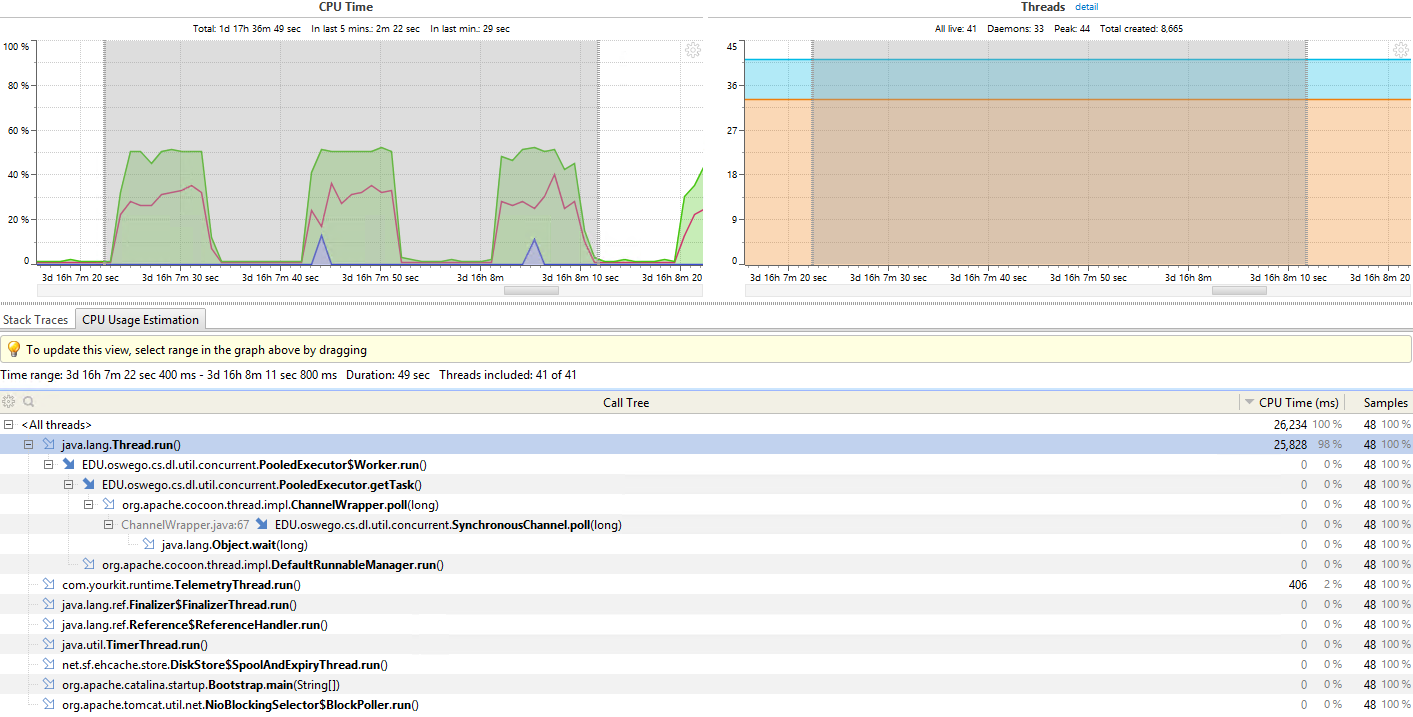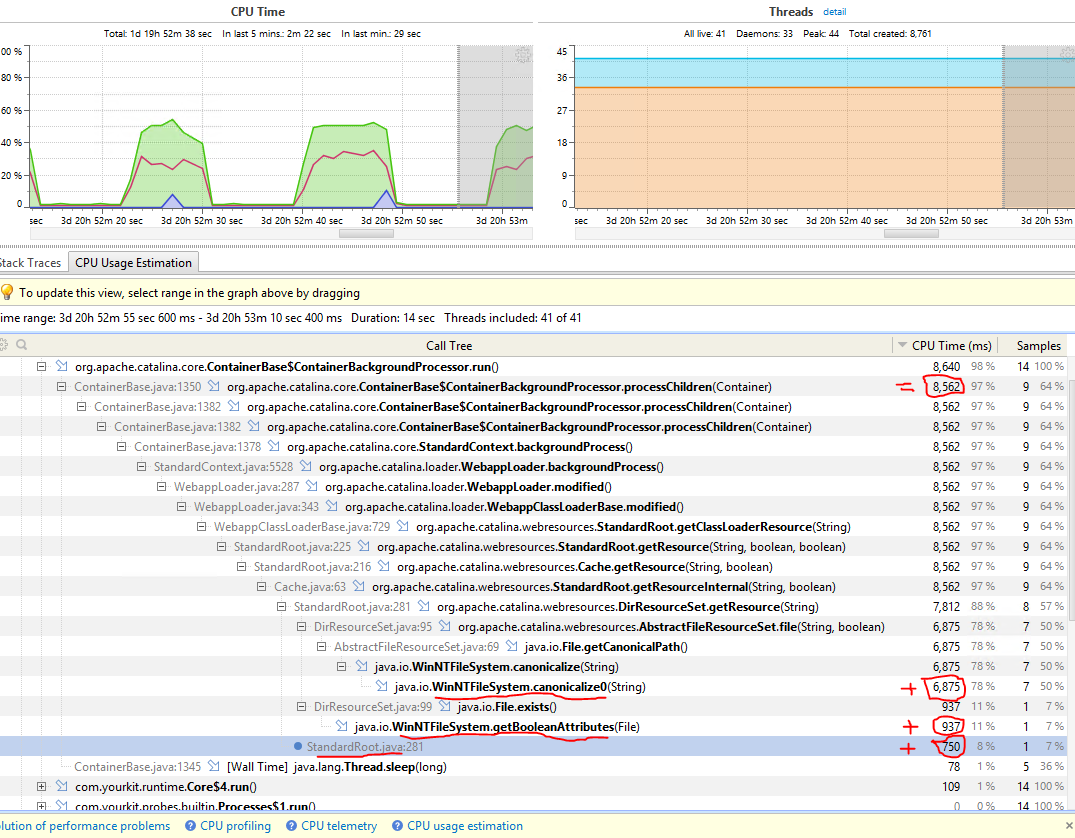On a windows 2012 RT (x64) TEST server we are running a Tomcat 8 installation and the CPU usage is disconcerting in its regularity of hitting peak usage.
The behavior is happening after an installation of our application but before anyone is accessing it. I have accessed a few pages and tested some features but nothing that could create this behavior that I know of.
There are 2 virtual processors on the server and every ~20 seconds, the CPU usage will spike (on the one processor that is running Tomcat) to 100% for 10 seconds (give or take). See below:
The regularity of the pattern indicates to me that something is incorrect in either the installation or the settings of Tomcat 8.
I have installed the YourKit Java Profiler (by SO recommendation) which I was hoping could shed some light on what is causing these spikes, but haven't been able to see the reason the threads are starting -- at least in part to my newness to YourKit. I did attach it to the Tomcat launch file and it seems to be tracking the behavior.
The catalina logs are silent during the spiking occurrences (as are my application logs) but when I stopped Tomcat there were some messages about ThreadLocals getting started but could not be removed and then: "...Threads are going to be renewed over time to try and avoid a probable memory leak."
I left the server running over the weekend and the pattern has continued until today so I don't think my symptoms are going away. Whatever is starting up has now consumed all available RAM on the system just from starting up these threads (and/or YourKit) every 20 seconds.
What is a possible approach to isolate this aberrant Tomcat activity and hopefully stop or rectify it?
There are many graphs and tabs in YourKit so I hesitate to list everything that might be helpful. Thanks for helping me narrow down the problem with what YourKit (or other tools) could offer me.
Info from catalina log regarding start-up:
Apache Tomcat/8.0.23
Architecture: amd64
Java Home: C:\Program Files\Java\jre1.8.0_65
CATALINA_BASE: C:\Program Files\Apache Software Foundation\Tomcat 8.0
2015-12-08 Update
At Gergely's request, the application is a local installation of DSpace. It's a Java application with a Postgres SQL database backend. We are customizing an opensource version of it from here: http://www.dspace.org/introducing. I'm not exactly sure what else can be helpful and I think the stack trace is more revealing as to what is (and isn't) running -- see below.
By turning on Stack Telemetry in YourKit, "CPU Estimation" was made available by dragging the cursor across a period of profiler history. To me, it looks like all the CPU is doing is spinning idly. Are the Java files pictured below Tomcat routines? They don't strike me as DSpace related (although I'm not an expert) nor does it look like any work is being done while the CPU is peaking.
Of note: the stack trace is identical during the quiet periods -- the only difference being CPU Time (ms) is in the hundreds rather than thousands of milliseconds. For a more direct comparison than what is below, the hump represents ~8,000 ms in Thread.run() and the quiet periods consume ~125 ms of cpu time (although covering approximately the same amount of time).
Lastly, when pages of the application are being requested, a subsequent branch of code appears in the Call Tree. If it happened during the time of a spike it may only take 400 ms of CPU time to load a whole page. The code branch that appears is ApplicationFilterChain.java as a whole separate branch alongside PooledExecutor$Worker.run() -- both underneath java.lang.Thread.run() in the hierarchy.
When trying to interpret the stack trace: Is EDU.oswego.cs.dl.util.concurrent.PooledExecutor$Worker.run() responsible?
Processor spikes with no known, associated activity
2015-12-08 Update #2
YourKit comes pre-configured to hide certain java class name patterns which obscured drilling down on java.lang.Thread. Clearing the filters enabled the following screenshots showing that the vast majority of processing time during a spike event is through calling the following 3 methods:
- java.io.WinNTFileSystem.canonicalize0
- java.io.WinNTFileSystem.getBooleanAttributes (inFile.exists())
- StardardRoot.java
My apologies for not yet knowing enough about Tomcat or DSpace to know who is launching these tasks. (In case it matters the line directly above the first line is java.lang.Thread.run() and then <All threads>)



